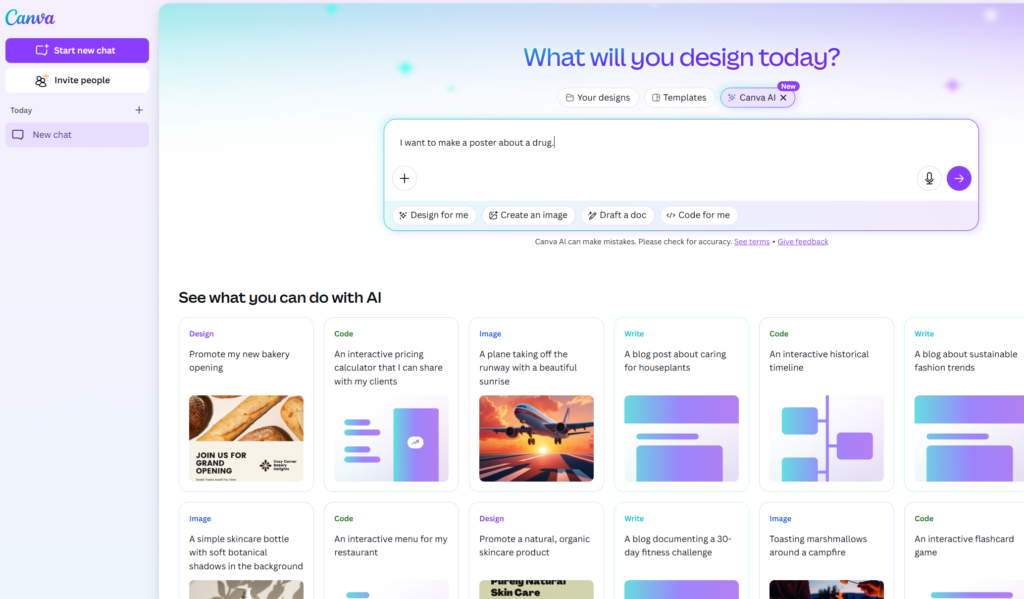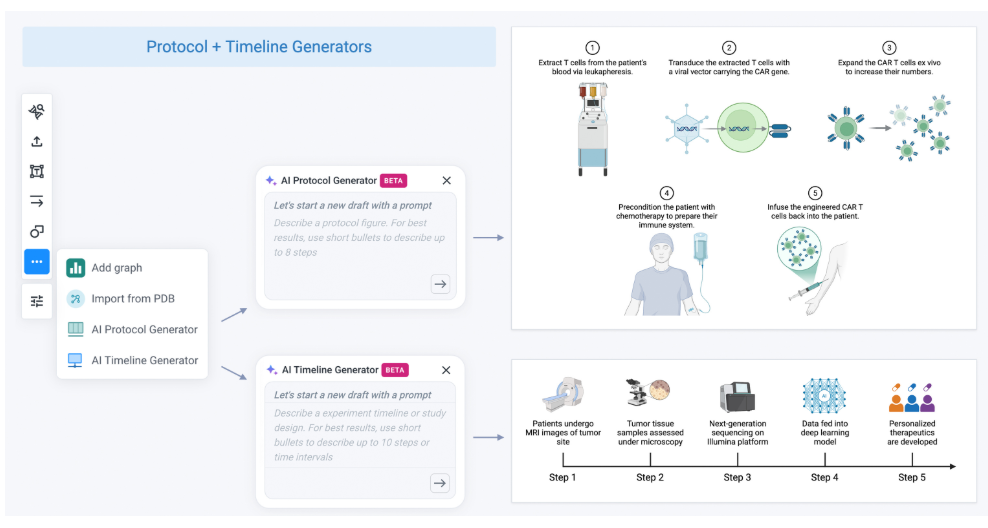
Creating Video Abstracts with AI Tools
— by Wilson Tang
Introduction
While traditional written abstracts remain essential, video abstracts can help share your work with broader audiences. Thanks to advances in artificial intelligence, it is now possible for anyone—including those with no video editing skills—to create engaging and professional-looking video abstracts.
In this post, I will share an experience in using three types of AI-powered tools: an AI avatar generator for automated voice and presentation, an online graphic design platform for slide creation and layout, and a scientific illustration tool for producing accurate and visually appealing figures.
Why Use Video Abstracts?
• Increases research visibility
Video abstracts provide a dynamic and concise overview of research, making it easier for a broader audience to understand key findings without reading the full paper. Research indicates that incorporating video abstracts is associated with increased views and citations (Zong et al., 2019; Bonnevie et al., 2023).
• Enhances engagement on social media
Video content is highly shareable and tends to attract more attention on social media compared to text-based summaries. Digestible visualisations received more attention, reach and impact on X (Erskine & Hendricks, 2024). Video abstracts catalyze public engagement by attracting a broader audience due to their engaging format (Finley et al., 2020).
Experience Sharing
Below is the workflow I tried for creating a video abstract. All the tools tested are with a free plan or provide some free credits.
Note: Please check the journals’ policies on use of AI tools.
1. Scripting and Voice Generation with HeyGen
HeyGen is an AI video platform that lets you generate human-like avatars and voices.
- Script the Abstract: First, I write a concise, plain-language summary of the research.
- AI Avatar and Voice: In HeyGen, I paste my script and select an AI avatar and voice that match the tone of the research. The platform generates a narration.

2. Visual Design with Canva
Canva is an intuitive graphic design platform.
- Generate designs with AI: Access AI function from the homepage, go to the search and AI bar. Select Canva AI then “Design for me”.
- Storyboard Creation: I outline key points and create simple slides for each, matching them to the script.
- Design Graphics: Using Canva’s templates, I add icons, charts, and key text to keep visuals clean and engaging.
- Export Slides: I export the visuals as images or short video clips.

3. Scientific Illustration with Biorender
Biorender is designed for creating professional scientific figures.
- Text to figure: Select Protocol Generator or Timeline Generator. Type a short text description of the protocol or timeline.
- Custom Figures: I create diagrams, pathways, or molecular structures relevant to the research.
- Export to Canva or Direct Video: Download illustrations and add them to Canva slides or directly to the video editor in HeyGen.

4. Bringing it Together
- Upload Visuals to HeyGen: I upload my Canva slides and Biorender graphics into HeyGen, syncing them with the AI narration.
- Preview and Edit: Adjust timing, transitions, and pacing to ensure the final video flows smoothly.
- Export Video: Download the final video abstract for sharing on social media, YouTube, or academic platforms.

Example Video Abstract
Note: The video abstract is created based on the article “Tang, W.C., Tsao, S.W., Jones, G.E., Liu, X., Tsai, M.H., Delecluse, H.-J., Dai, W., You, C., Zhang, J., Huang, S.C.M., Leung, M.M.-h., Liu, T., Ching, Y.P., Chen, H., Lo, K.W., Li, X. and Tsang, C.M. (2023), Latent membrane protein 1 and macrophage-derived TNFα synergistically activate and mobilize invadopodia to drive invasion of nasopharyngeal carcinoma. J. Pathol., 259: 163-179. https://doi.org/10.1002/path.6036“. It is neither commissioned nor endorsed by the authors.
Tips for Success
Here are some suggestions from the experience:
- Keep scripts simple and focused—avoid jargon.
- Use visuals to reinforce, not repeat, your narration.
- Test different avatars/voices for the best fit.
- Cite your sources and include your contact or lab info at the end.
Conclusion
Video abstracts could attract greater attention from the public, as well as more citations. AI tools like HeyGen, Canva, and Biorender have made it easier to create video abstracts. As a layman without video editing experience, I feel the learning curve is gentle, and the results are worth it.
References
Bonnevie, T., Repel, A., Gravier, F., Ladner, J., Sibert, L., Muir, J., … & Fischer, M. (2023). Video abstracts are associated with an increase in research reports citations, views and social attention: a cross-sectional study. Scientometrics, 128(5), 3001-3015. https://doi.org/10.1007/s11192-023-04675-9
Erskine, N., & Hendricks, S. (2024). What is the effect of posting video abstracts on journal article impact? Journal of Visual Communication in Medicine, 47(2), 47-55. https://doi.org/10.1080/17453054.2024.2423087
Finley, N., Swartz, T., Cao, K., & Tucker, J. (2020). How to make your research jump off the page: co-creation to broaden public engagement in medical research. Plos Medicine, 17(9), e1003246. https://doi.org/10.1371/journal.pmed.1003246
Zong, Q., Xie, Y., Tuo, R., Huang, J., & Yang, Y. (2019). The impact of video abstract on citation counts: evidence from a retrospective cohort study of new journal of physics. Scientometrics, 119(3), 1715-1727. https://doi.org/10.1007/s11192-019-03108-w
Disclaimer:
The software mentioned in this blog is referenced solely for illustrative and informational purposes and does not constitute any form of promotion or endorsement. Alternative software options are available on the market and may serve similar functions.
The author accepts full responsibility for the content presented and the opinions expressed herein.
The video abstract is created based on the article ” Tang, W.C., Tsao, S.W., Jones, G.E., Liu, X., Tsai, M.H., Delecluse, H.-J., Dai, W., You, C., Zhang, J., Huang, S.C.M., Leung, M.M.-h., Liu, T., Ching, Y.P., Chen, H., Lo, K.W., Li, X. and Tsang, C.M. (2023), Latent membrane protein 1 and macrophage-derived TNFα synergistically activate and mobilize invadopodia to drive invasion of nasopharyngeal carcinoma. J. Pathol., 259: 163-179. https://doi.org/10.1002/path.6036“. It is neither commissioned nor endorsed by the authors.


